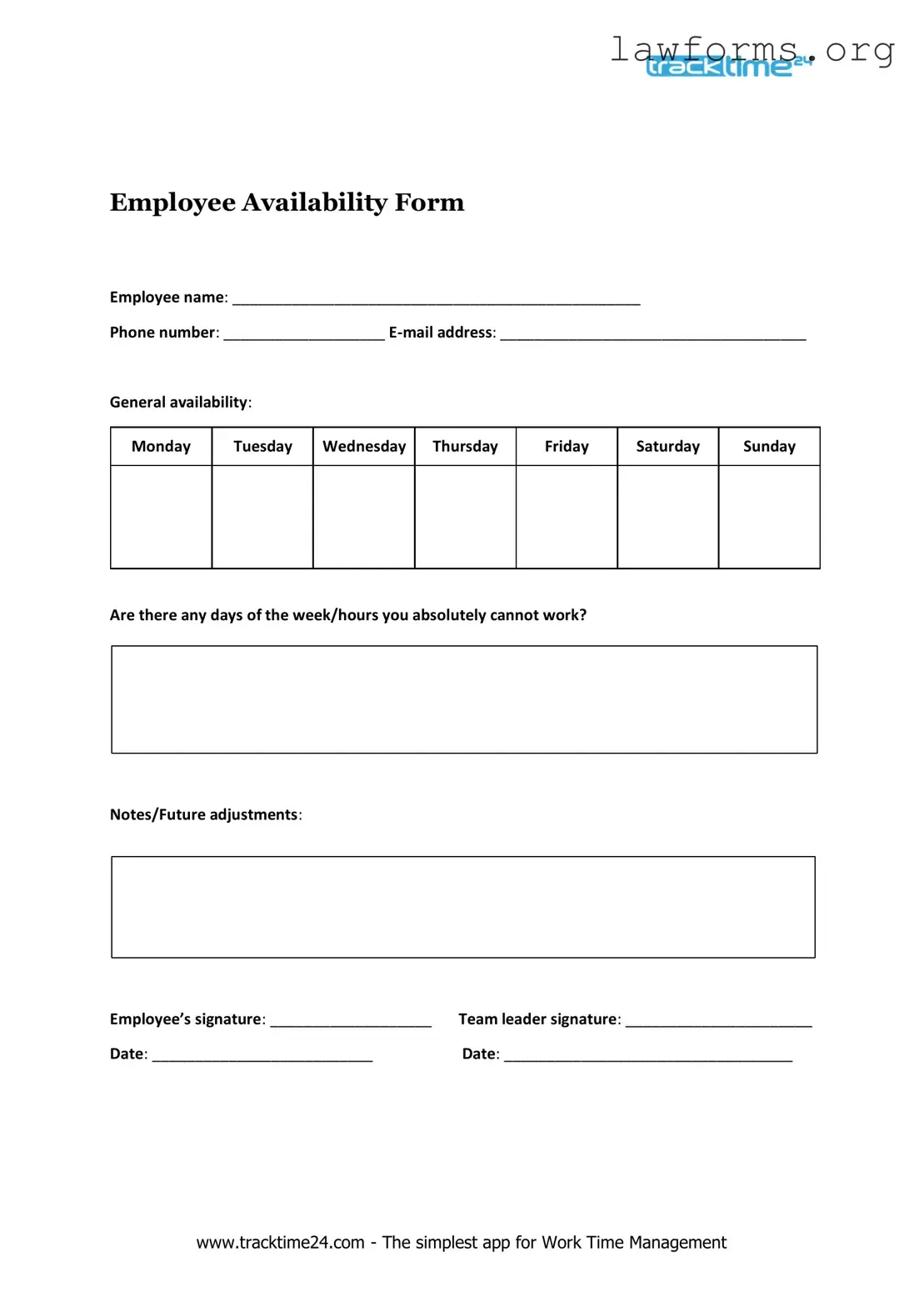Fill Out a Valid Employee Availability Template
The Employee Availability form is a tool used by employers to gather information about when employees are available to work. This form helps in scheduling shifts effectively, ensuring that staffing needs are met while accommodating employee preferences. To streamline your scheduling process, please fill out the form by clicking the button below.
Customize Document Online

